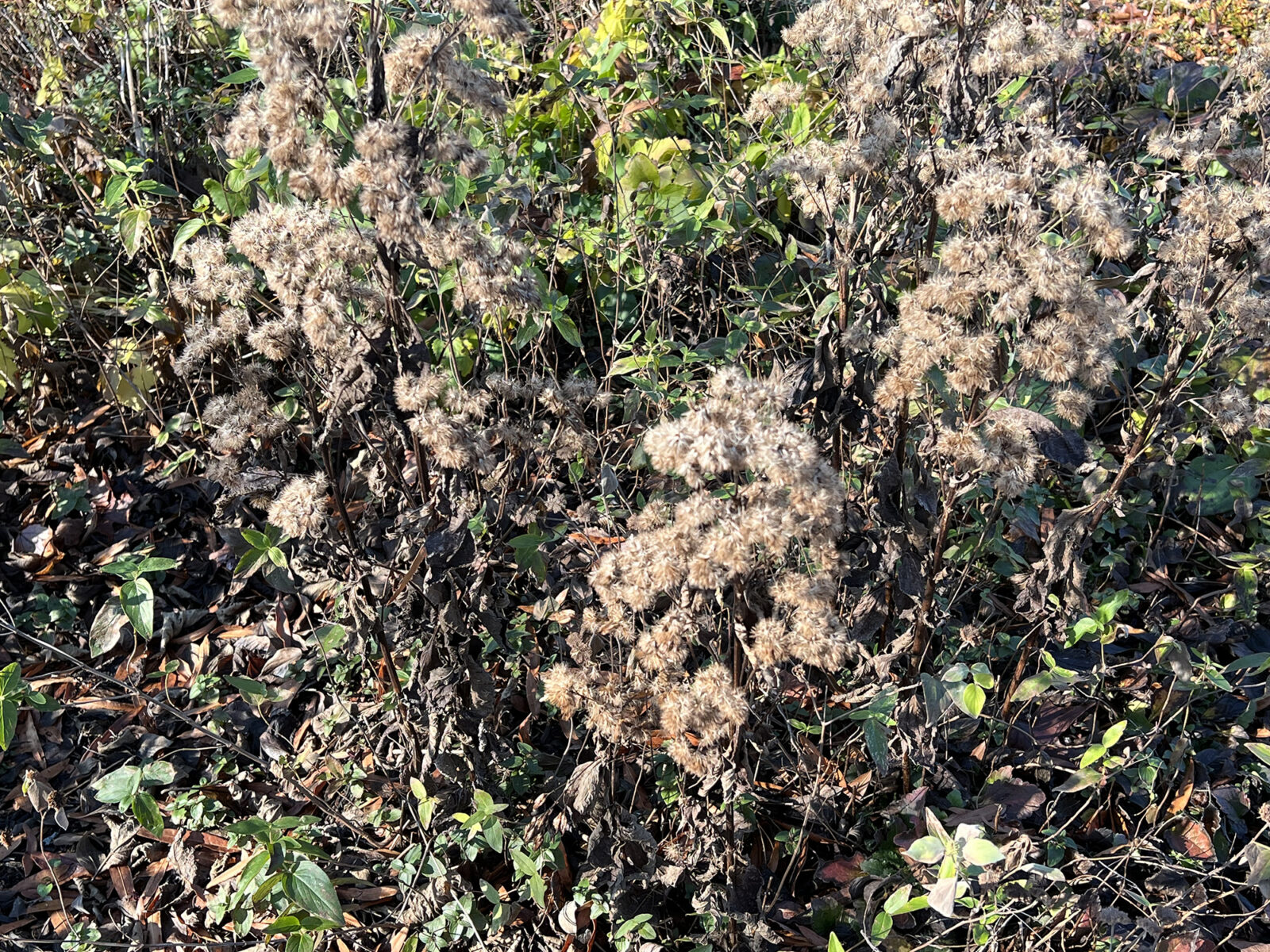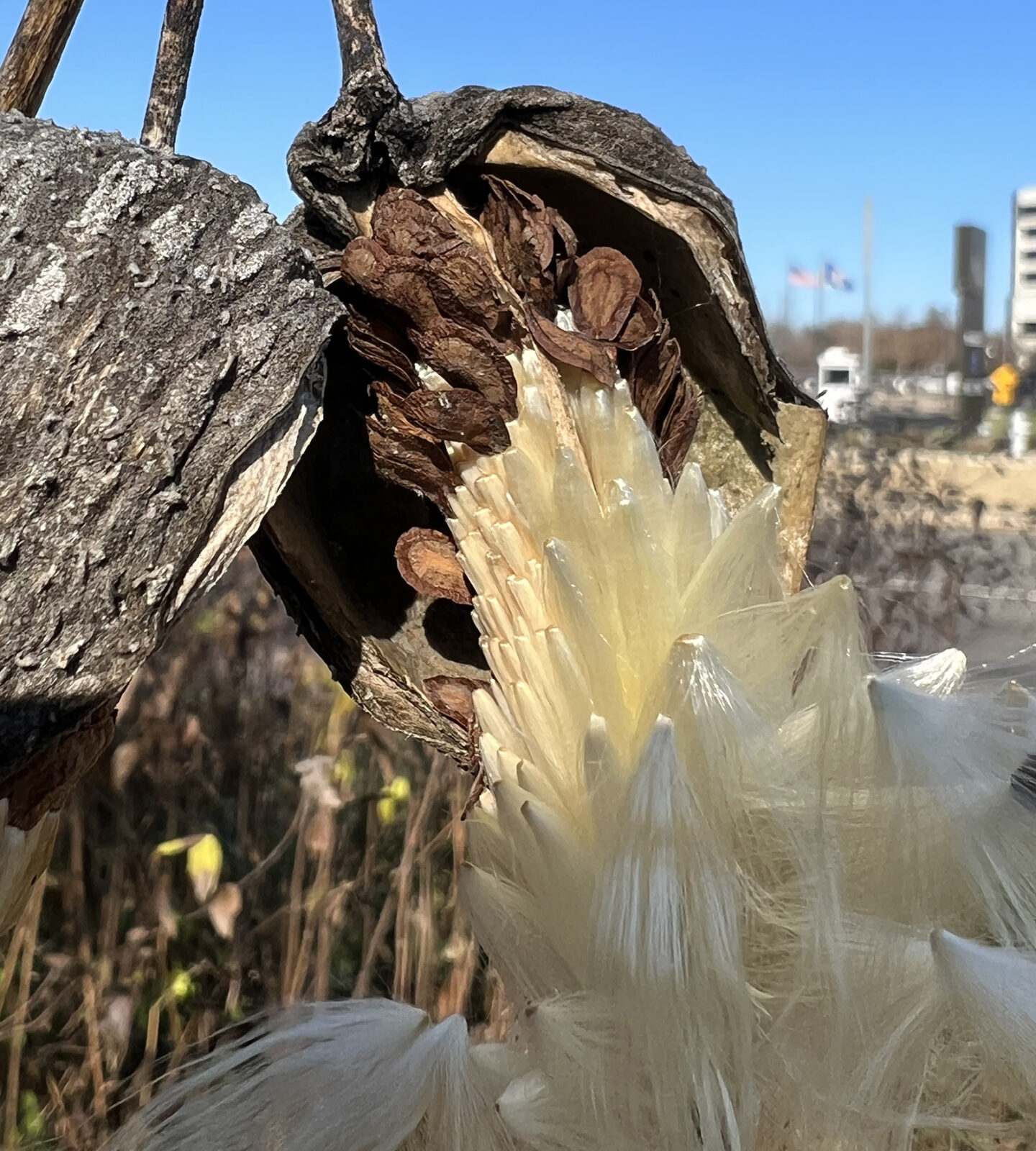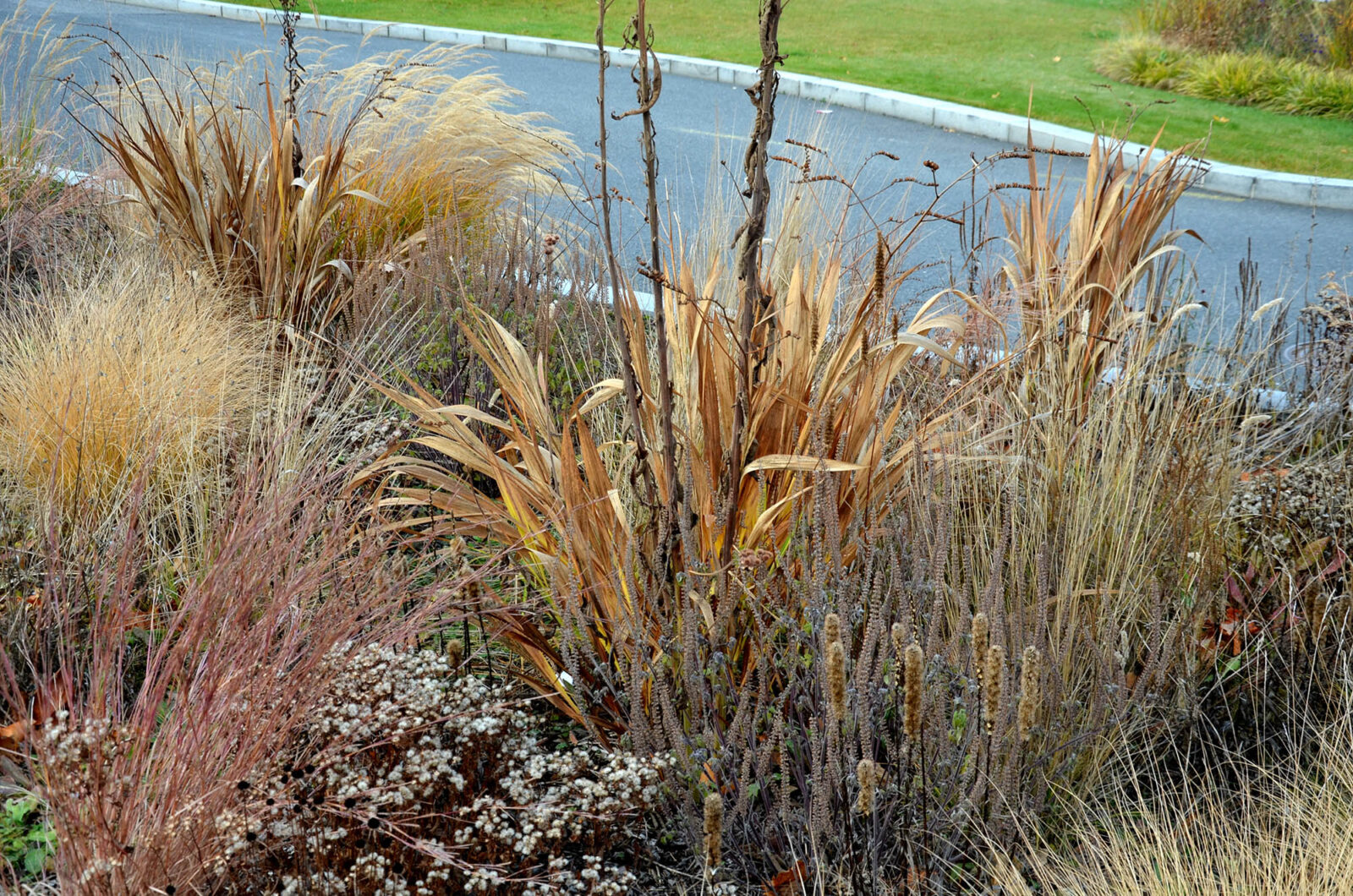By Stephen Living/DWR
Photos by Stephen Living/DWR
With the weather turning colder and hints and red and gold starting to paint the trees, gardeners thought may turn towards “cleaning up” their landscape. This can include cutting down the spent flowers and dead stalks of the plants and grasses that provided valuable habitat to the wildlife in our spaces during the warmer months. Not so fast! Your Habitat at Home ® is not dead yet… in fact, it’s still working hard to support wildlife.
In nature, these stalks and flowers heads aren’t cut or trimmed. Winter weather will slowly break them down, leaving room for fresh growth in the spring. In the meantime, these plants still have a lot to offer as habitat.
Food
One of the most obvious ways these plants support wildlife is through the fruits and seeds that they provide through the winter. Leaving seed heads from plants like Joe-pye, black-eyed Susan, bergamot, and blazing star in the garden over the winter is a great way to provide food for birds and other wildlife.

Three-nerve Joe-pye weed can be valuable for wildlife even in the winter.
Winter Homes and Nurseries
When cold winds blow, finding someplace to stay warm is a critical need for all sorts of wildlife. Leaving plants standing through the winter provides shelter. Some species like yellow-faced bees and leaf-cutter bees nest in the old hollow stems of last year’s plants. Want to help them? Leave your stems standing through the winter.
In the spring, cut back your stems anywhere from 8″ to 24″ from the ground. The tops can be left to decompose in the garden and new spring growth will soon camouflage the stubble. Female bees will find these open stems and start the next generation of native pollinators.
Many other insects also use the stems of native plants as places to raise young, sometimes laying the eggs directly into the stems.
Native plants still aren’t done helping wildlife—many species of birds use “fluffy” plant material in their nests. Last year’s seed heads offer plenty of this!

An open milkweed pod, spilling out floss and seeds.
They Still Look Cool!
Many native plants still have visual appeal in the landscape over the winter. The varied shapes and forms can provide visual interest through the cold months.

Even without greenery and flowers, native plants can add beauty to the landscape. Photo by Shutterstock
Check out this pamphlet from the Xerces Society for more information and a step-by-step guide.
Stephen Living is the Habitat Education Coordinator at the Virginia Department of Wildlife Resources.


